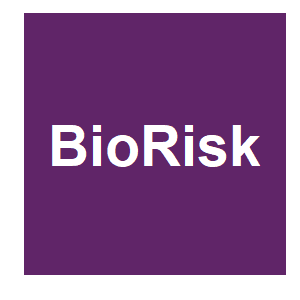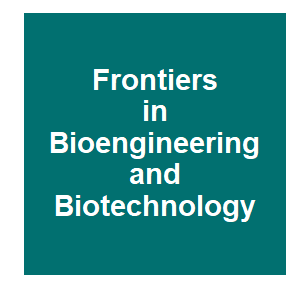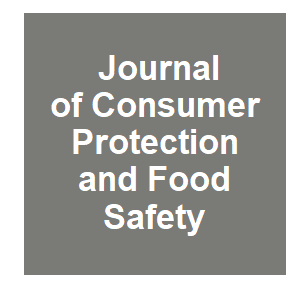
Keywords: environmental risk-assessment

|
Assessing potential hybridization between a hypothetical gene drive-modified Drosophila suzukii and nontarget Drosophila speciesS. Wolf, J. Collatz, J. Enkerli, F. Widmer and J. Romeis, Risk Analysis, 2023.
Genetically engineered gene drives (geGD) are potentially powerful tools for suppressing or even eradicating populations of pest insects. Before living geGD insects can be released into the environment, they must pass an environmental risk assessment to ensure that their release ... Keywords: Aedes aegypti, agriculture, dengue, environmental risk-assessment, Eradication, Food Science & Technology, gene drive guidance, gene drive safety, Genetic control, Genetic modification, insects, management, policy, population, problem formulation, regulation, risk assessment, transmission |

|
Beyond limits – the pitfalls of global gene drives for environmental risk assessment in the European UnionM. Dolezel, C. Lüthi and H. Gaugitsch, BioRisk, 15:1-29. 2020.
We evaluate the novel features of GDOs and outline the resulting challenges for the environmental risk assessment. Keywords: Aedes aegypti, agriculture, dengue, environmental risk-assessment, Eradication, Food Science & Technology, gene drive guidance, gene drive safety, Genetic control, Genetic modification, insects, management, policy, population, problem formulation, regulation, risk assessment, transmission |

|
The value of existing regulatory frameworks for the environmental risk assessment of agricultural pest control using gene driveJ. Romeis, J. Collatz, D. C. M. Glandorf and M. B. Bonsall, Environmental Science & Policy, 108:19-36. 2020.
The application of (synthetic) gene drives is a powerful tool to control populations of insects that are agricultural pests, vectors of diseases, or a threat to biodiversity potentially leading to the local or global eradication of a species. The potential use of gene drive ... Keywords: Aedes aegypti, agriculture, dengue, environmental risk-assessment, Eradication, Food Science & Technology, gene drive guidance, gene drive safety, Genetic control, Genetic modification, insects, management, policy, population, problem formulation, regulation, risk assessment, transmission |

|
Regulation of GM Organisms for Invasive Species ControlH. J. Mitchell and D. Bartsch, Frontiers in Bioengineering and Biotechnology, 7:1-11. 2020.
Invasive species can cause significant harm to the environment, agriculture, and human health, but there are often very limited tools available to control their populations. Gene drives (GD) have been proposed as a new tool which could be used to control or eliminate such ... Keywords: Aedes aegypti, agriculture, dengue, environmental risk-assessment, Eradication, Food Science & Technology, gene drive guidance, gene drive safety, Genetic control, Genetic modification, insects, management, policy, population, problem formulation, regulation, risk assessment, transmission |

|
Regulatory experience and challenges for the release of GM insectsBeech, C, Journal Fur Verbraucherschutz Und Lebensmittelsicherheit-Journal of Consumer Protection and Food Safety, 9:S71-S76. 2014.
Genetically modified (GM) insects are a potentially valuable new tool for the biological control of insect pests of humans, animals and plants. Considerable progress has been made recently in transfer of GM insects from the laboratory to release and evaluation in the environment. ... Keywords: Aedes aegypti, agriculture, dengue, environmental risk-assessment, Eradication, Food Science & Technology, gene drive guidance, gene drive safety, Genetic control, Genetic modification, insects, management, policy, population, problem formulation, regulation, risk assessment, transmission |
Keywords: environmental risk-assessment

|
Assessing potential hybridization between a hypothetical gene drive-modified Drosophila suzukii and nontarget Drosophila speciesS. Wolf, J. Collatz, J. Enkerli, F. Widmer and J. Romeis, Risk Analysis, 2023.
Genetically engineered gene drives (geGD) are potentially powerful tools for suppressing or even eradicating populations of pest insects. Before living geGD insects can be released into the environment, they must pass an environmental risk assessment to ensure that their release ... Keywords: Aedes aegypti, agriculture, dengue, environmental risk-assessment, Eradication, Food Science & Technology, gene drive guidance, gene drive safety, Genetic control, Genetic modification, insects, management, policy, population, problem formulation, regulation, risk assessment, transmission |

|
Beyond limits – the pitfalls of global gene drives for environmental risk assessment in the European UnionM. Dolezel, C. Lüthi and H. Gaugitsch, BioRisk, 15:1-29. 2020.
We evaluate the novel features of GDOs and outline the resulting challenges for the environmental risk assessment. Keywords: Aedes aegypti, agriculture, dengue, environmental risk-assessment, Eradication, Food Science & Technology, gene drive guidance, gene drive safety, Genetic control, Genetic modification, insects, management, policy, population, problem formulation, regulation, risk assessment, transmission |

|
The value of existing regulatory frameworks for the environmental risk assessment of agricultural pest control using gene driveJ. Romeis, J. Collatz, D. C. M. Glandorf and M. B. Bonsall, Environmental Science & Policy, 108:19-36. 2020.
The application of (synthetic) gene drives is a powerful tool to control populations of insects that are agricultural pests, vectors of diseases, or a threat to biodiversity potentially leading to the local or global eradication of a species. The potential use of gene drive ... Keywords: Aedes aegypti, agriculture, dengue, environmental risk-assessment, Eradication, Food Science & Technology, gene drive guidance, gene drive safety, Genetic control, Genetic modification, insects, management, policy, population, problem formulation, regulation, risk assessment, transmission |

|
Regulation of GM Organisms for Invasive Species ControlH. J. Mitchell and D. Bartsch, Frontiers in Bioengineering and Biotechnology, 7:1-11. 2020.
Invasive species can cause significant harm to the environment, agriculture, and human health, but there are often very limited tools available to control their populations. Gene drives (GD) have been proposed as a new tool which could be used to control or eliminate such ... Keywords: Aedes aegypti, agriculture, dengue, environmental risk-assessment, Eradication, Food Science & Technology, gene drive guidance, gene drive safety, Genetic control, Genetic modification, insects, management, policy, population, problem formulation, regulation, risk assessment, transmission |

|
Regulatory experience and challenges for the release of GM insectsBeech, C, Journal Fur Verbraucherschutz Und Lebensmittelsicherheit-Journal of Consumer Protection and Food Safety, 9:S71-S76. 2014.
Genetically modified (GM) insects are a potentially valuable new tool for the biological control of insect pests of humans, animals and plants. Considerable progress has been made recently in transfer of GM insects from the laboratory to release and evaluation in the environment. ... Keywords: Aedes aegypti, agriculture, dengue, environmental risk-assessment, Eradication, Food Science & Technology, gene drive guidance, gene drive safety, Genetic control, Genetic modification, insects, management, policy, population, problem formulation, regulation, risk assessment, transmission |

Contact
David O’Brochta
Foundation for the
National Institutes of Health
geneconvenevi@fnih.org
RSS

